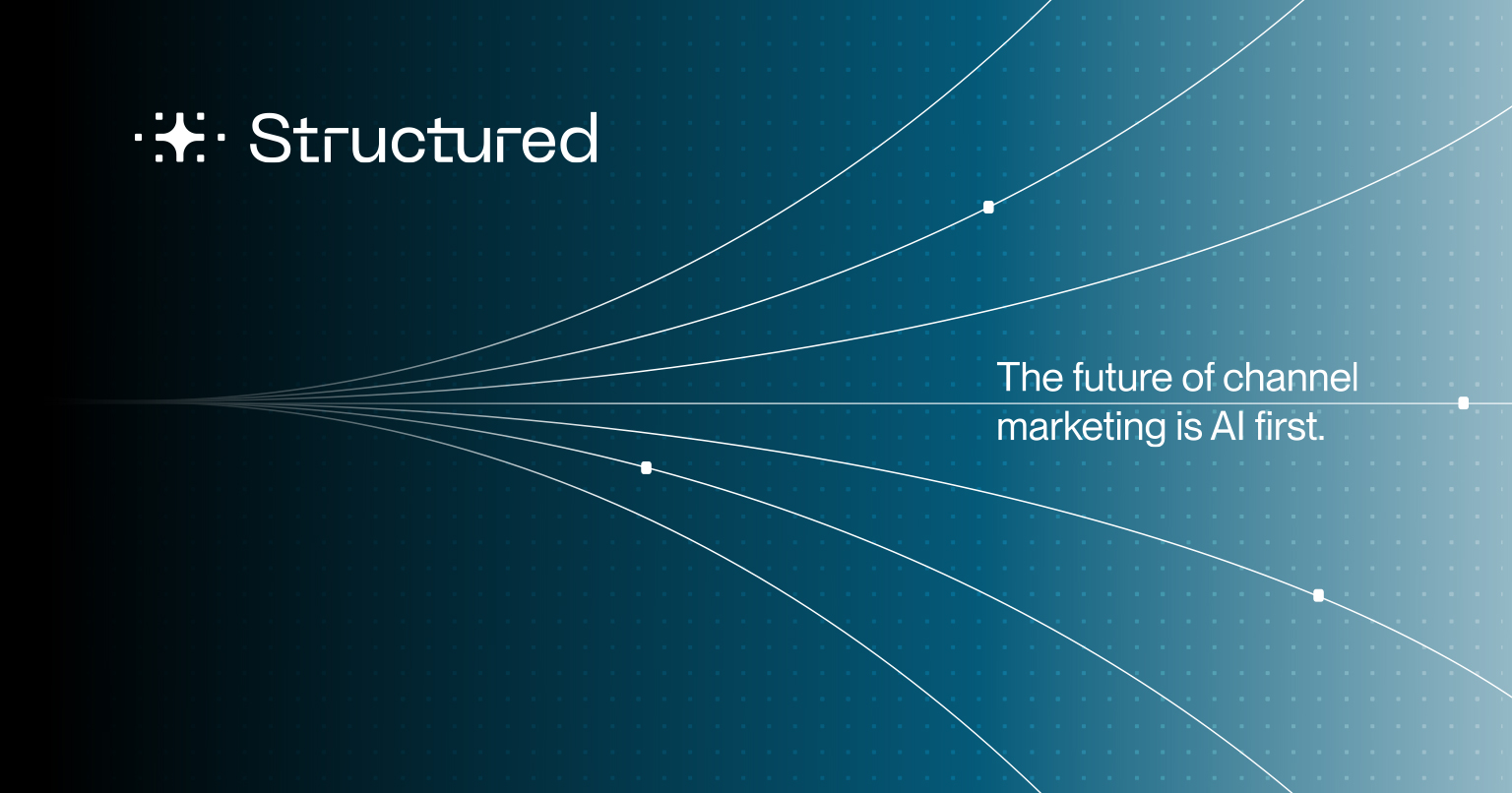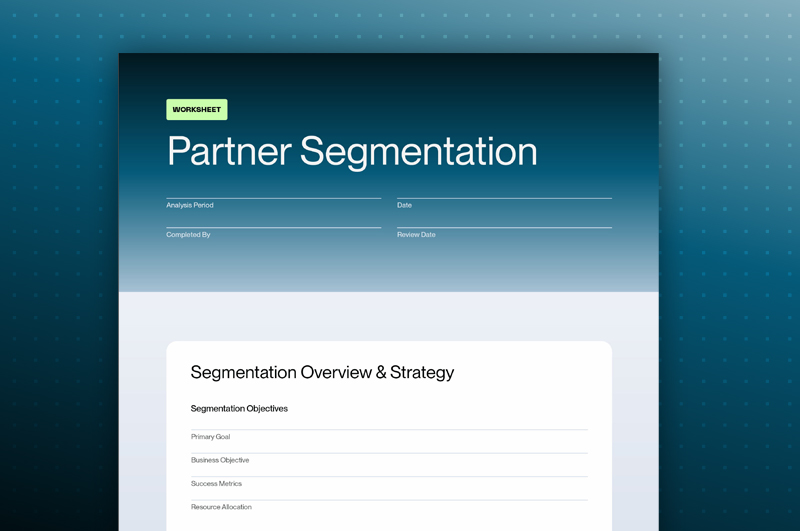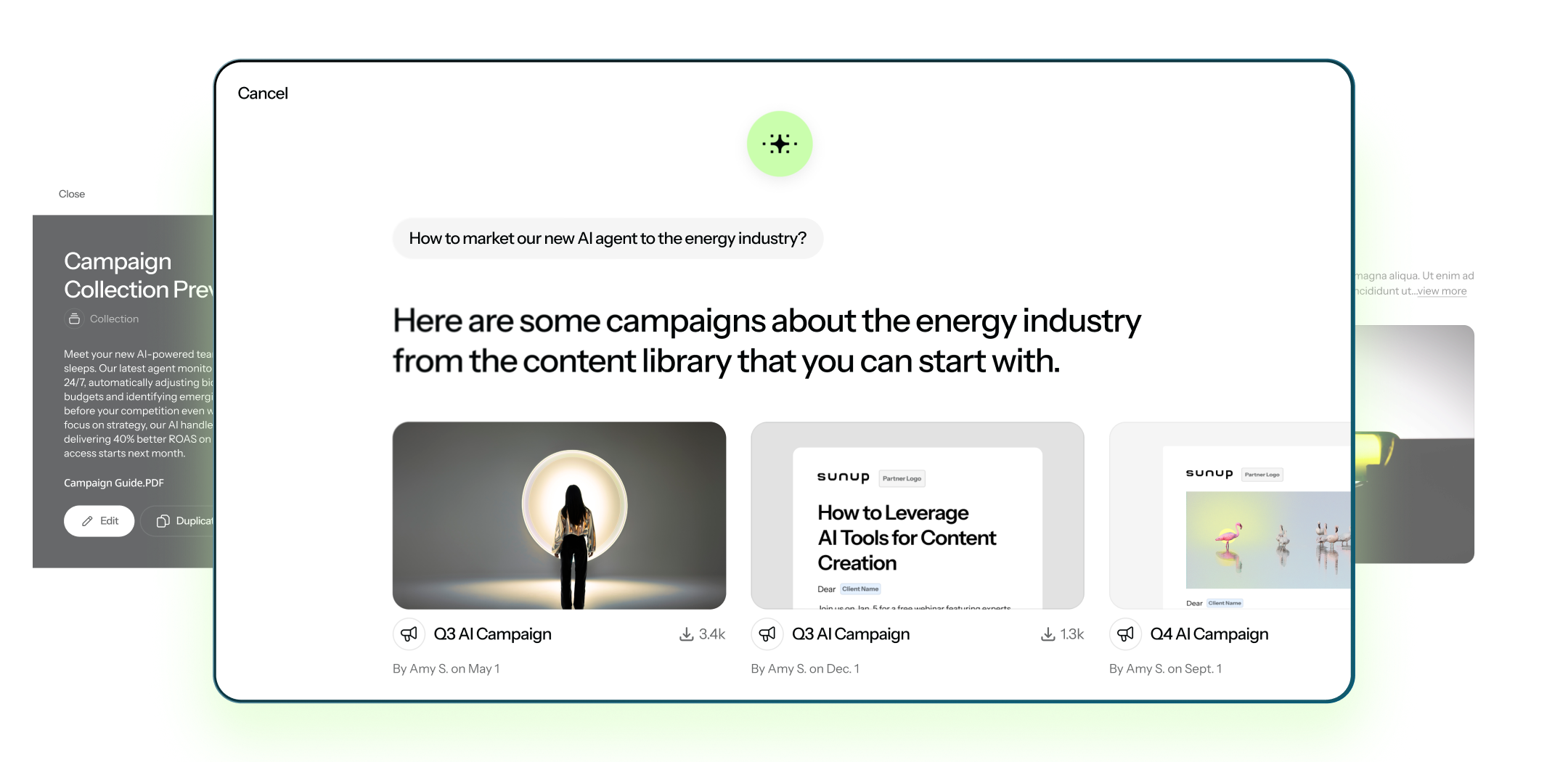In the race to modernize partner ecosystems, one thing has become clear: our old definitions of enablement no longer hold up. For years, we threw content, portals, and programs at partners and called it support. But most of them weren’t asking for more. They were asking for better — better timing, better context, and better outcomes.
AI is giving us the tools to finally deliver on that. But like any shift, it comes with a mindset reset. We don’t just need better tech. The tech is here. We need a better approach to how we empower partners to grow.
I’ve been thinking a lot about what enablement really means in a digital-first channel, what AI makes possible, and what still depends entirely on us. Recently, I sat down with Rebecca Jones from Bridge Partners to dive deeper into these insights. Her perspective really brought these strategies to life, and it’s a perfect segue into how we can apply them in our own channel marketing efforts.
Self-Serve Isn’t a Downgrade Anymore
There’s been a long-standing perception in channel marketing that self-serve is what you give the partners you don’t have time for. Your top-tier partners get people. Everyone else gets portals.
That thinking is starting to break. And it should.
The truth is, self-serve isn’t a downgrade anymore. It’s an expectation. Partners of every size want to move at their own speed, access what they need instantly, and avoid waiting for a callback or hunting through a portal with 17 tabs. They’re not looking for less support. They’re looking for support that meets them where they are.
Good self-serve doesn’t mean pushing people into static libraries. It means using AI and real partner data to deliver smart, dynamic interactions that feel helpful, not generic.
It’s about putting the right resources in front of the right partners at the exact right time. It’s about letting them activate a campaign in minutes, get messaging for a specific vertical, or pull a battle card without opening a ticket or sitting through a training.
We’re finally at the point where self-serve can actually feel more personalized than traditional enablement models. But only if we build it right. Because if we want our partners to move fast, we have to move with them.
Real Enablement Is Personalized and Timely
It’s easy to say “we support our partners,” but what does that actually look like in practice?
Too often, we define enablement as a list of resources: a portal, a set of campaigns, a one-pager about value props. But the reality is, enablement is contextual. It’s not just about what you give partners; it’s about when, how, and why.
I keep coming back to this: timing and personalization matter more than volume.
Let’s say a partner just submitted a lead. That is the single most critical moment to deliver value, not three days later in a monthly newsletter, and not buried on page seven of your playbook. What if the moment that lead comes in, they get instant access to a tailored proposal, sales collateral, or follow-up messaging based on that specific opportunity?
That’s the kind of experience partners are starting to expect simply because the technology exists to do it. And other vendors are already doing it.
Personalization isn’t just a “nice to have” anymore. It’s table stakes.
Partners want to feel seen. They want to know that you understand their business, their vertical, and their goals. And that doesn’t happen with one-size-fits-all materials. It happens when your enablement is based on behavior, role, region, industry, and context.
The good news is AI makes this level of responsiveness possible. The challenge is it requires you to rewire how you think about partner support. Less static content. More smart delivery. Less noise. More relevance.
We have the data. We have the signals. Now it’s on us to respond to them — in real time, and with real value.
What AI Can’t Do (And Where Humans Matter Most)
There’s no question that AI is changing the game for partner marketing and enablement. It’s making us faster. Smarter. More scalable. But in all the excitement, we have to be honest about what it can’t do — at least not yet.
AI can process inputs. It can summarize content, suggest copy, and recommend next steps. But it doesn’t know your partner. It doesn’t understand why they’re stuck, what they’re not saying, or how a certain friction point might be connected to something else in your program. That’s still on us. As are the personal connections that can only be made human to human.
One of the most important points Rebecca and I discussed in the episode was that human conversations are still irreplaceable, especially in the channel. And not just sales calls or executive briefings. I’m talking about the small, regular check-ins. The off-the-record gut checks. The “tell me what’s really going on” kind of calls.
These interactions uncover the friction that AI can’t see. The misalignment between a program’s intent and its actual execution. The feedback partners are too polite to submit through your portal.
And more often than not, these conversations don’t happen because we assume the portal or the dashboard or the data is telling us everything we need to know. It’s not.
If we want our channel programs to evolve, we need to balance AI with EQ. There is no substitute for the trust you build when a partner feels like you’re truly listening and genuinely willing to adapt.
So yes, use AI to scale. Use it to personalize, automate, recommend, and analyze. But don’t outsource the relationship. Because when the stakes are high and the margin for error is small, partners want to talk to a human who knows their world, not a chatbot trained on your CMS.
AI is powerful. But it’s the people who drive partner loyalty.
Make it Easy, Make it Measurable
If there’s one theme I keep coming back to — in every podcast, panel, and partner conversation — it’s this: your partner program is only as good as it is usable.
We spend months designing portals, campaigns, toolkits, and training. But if it’s not easy for partners to access, understand, and activate, it’s just shelfware. And we can’t afford that anymore.
One of the best points Rebecca made in our conversation was this: partners don’t want to be “sold to” on your program. They want to know how it helps them sell. That means every tool, every piece of content, every step of your program needs to be mapped to a clear outcome — and optimized for simplicity.
Can a partner find what they need in under 60 seconds?
Do they know what to do next without a training session?
Is the message tailored to their segment, language, and sales motion?
If the answer is no, then the burden of activation is still too high.
That’s where AI can shine, but only if we design the system around measurable enablement. If a partner interacts with your AI-powered assistant, what happens next? Are they actually deploying that campaign? Are they getting results? Are they coming back?
I’ve seen new platforms, like Structured AI, begin to crack this code. AI isn’t just a content engine, it’s a data feedback loop. And when we connect the dots between content, activation, and results, we’re not just making life easier for partners. We’re making partner marketing more accountable, more iterative, and ultimately, more strategic.
The Future Is Co-Built
One of the most important takeaways from my conversation with Rebecca is this: the most successful vendors aren’t building programs for partners — they’re building with them.
We’re seeing a real shift in mindset across the channel. The old model was top-down. Vendors built programs, launched campaigns, and told partners how to use them. But that approach assumes all partners are the same, and that simply doesn’t work anymore.
Rebecca put it perfectly: “We have to meet partners where they are, not just where we wish they were.”
That means more than just segmentation. It means listening. It means involving partners earlier in the content planning and tool development process. It means building feedback loops into your program and acting on what you hear.
And yes, it also means recognizing that some of your best insights will come from non-traditional partners. Smaller MSPs, boutique consultants, regional SIs — these are the folks who often spot market shifts first. They’re close to the customer, they’re nimble, and they know what works.
If we want our programs to be relevant and effective, we have to stop designing in a vacuum. The future of channel success is co-innovation, not just co-branding.
That doesn’t mean giving up control. It means inviting contribution, validating it with data, and scaling what works. AI can help here, too — not just by automating execution, but by surfacing the patterns across your partner base: what’s being used, what’s being ignored, and where the real traction lies.
Bringing It All Together
If there’s one thing I’ve learned from years in the channel it’s that there’s no such thing as a one-size-fits-all model for success. Every vendor, partner, and service provider is navigating a different mix of priorities, pain points, and opportunities. But the constants are clear: buyers expect more, partners want simplicity, and everyone is looking for proof that the time and energy they invest will pay off.
That’s why we can’t afford to treat the channel like a distribution layer anymore. It’s a strategic growth engine, but only if we treat it that way. That means listening to partners, removing friction, and investing in long-term relationships instead of short-term performance metrics.
We have more tools than ever to do that well. AI is giving us new ways to understand buyer behavior. Automation is freeing up time to focus on strategy instead of admin. And partner ecosystems are evolving into powerful networks that extend our reach far beyond what any of us could accomplish alone.
But tools alone won’t make the difference. It’s how we use them — with clarity, with consistency, and with a partner-first mindset — that will set us apart.
Let’s build that future together.




